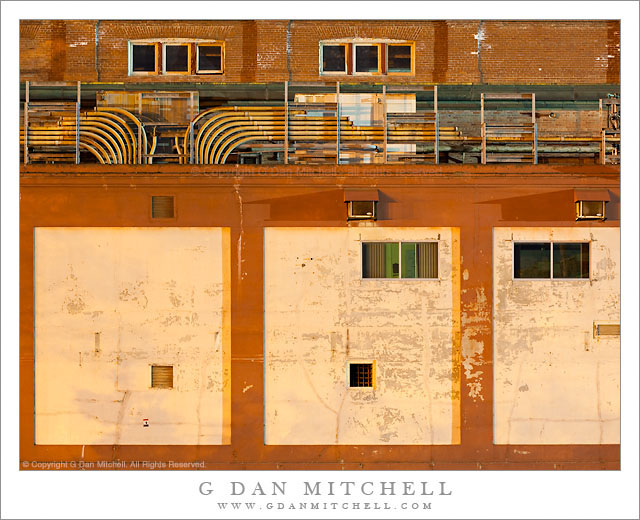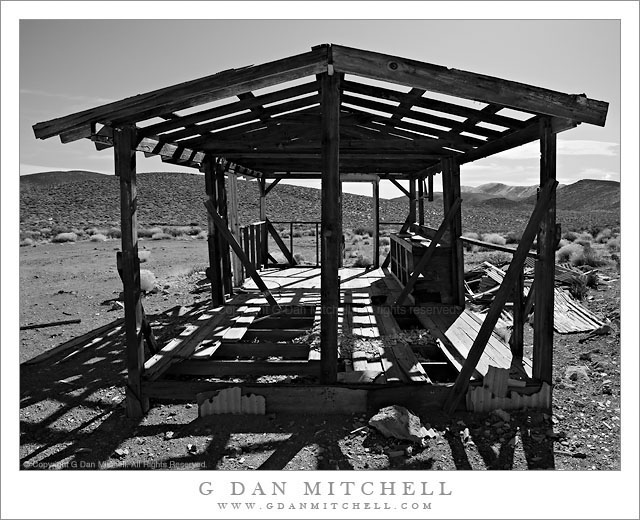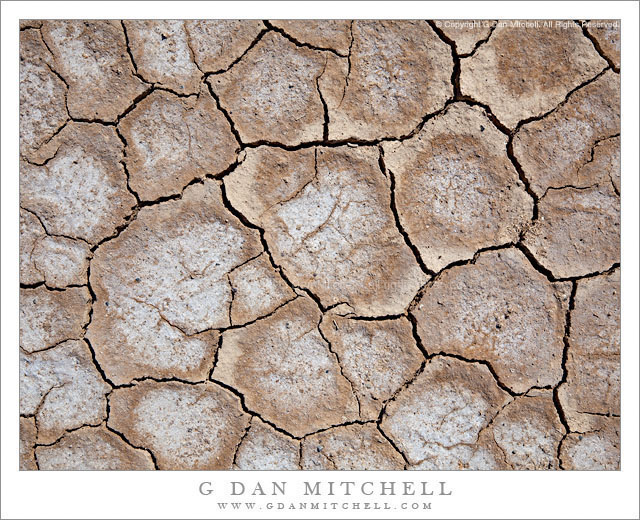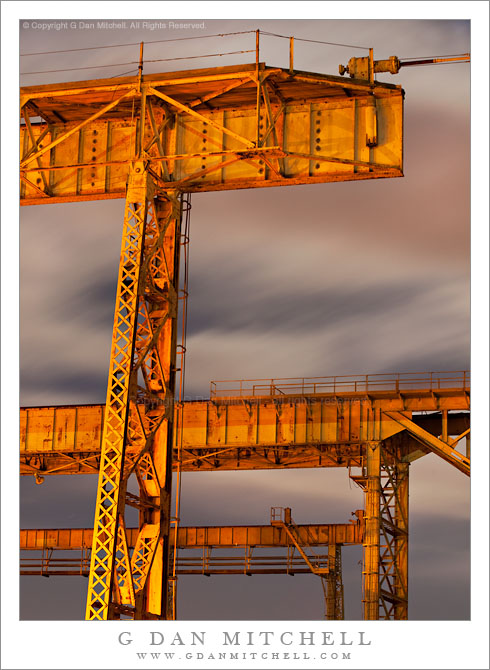Power Plant Wall, Night. Mare Island Naval Ship Yard, Vallejo, California. April 16, 2011. © Copyright G Dan Mitchell – all rights reserved.
Night photograph of the exterior wall of the power plant at Mare Island Naval Ship Yard.
I have wandered past this building on many previous night photography sessions at Mare Island and have photographed quite a bit nearby, but this is the first time I have photographed it, at least from this perspective. (The iconic power plant smokestack above this building has been a subject of mine in the past.) The first thing that caught my interest about this building is that wonderful bundle of pipes that emerges near the upper left area and then heads off to who-knows-where in both directions. As I looked at the side of the building and imagined what it would look like in a long exposure under this artificial light, the rectangular shapes of the painted sections of the concrete wall seemed like they might also be interesting. And only after I made the photograph and looked at it in post did I realize that there was enough light in the scene – and perhaps inside the building – to faintly light some parts of the interior seen through the windows. The many shadows coming from different directions are produced by multiple overlapping light sources nearby.
To give you an idea of how dark it was on the scene, there was not enough light to focus. Usually I can get just enough by using the live view feature on my camera and finding an edge or a reflection somewhere that provides a line that has enough light, but not here. I finally ended up using one of the standard night photography tricks: I took a very small pocket LED light, walked over and set it against the wall, walked back to my camera to focus on this point of light, returned to the wall to retrieve the light, walked back to the camera and made my exposure.
G Dan Mitchell Photography | Flickr | Twitter (follow me) | Facebook (“Like” my page) | LinkedIn | Email
Text, photographs, and other media are © Copyright G Dan Mitchell (or others when indicated) and are not in the public domain and may not be used on websites, blogs, or in other media without advance permission from G Dan Mitchell.




